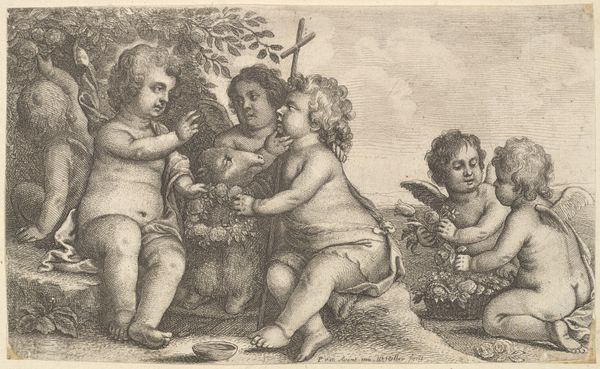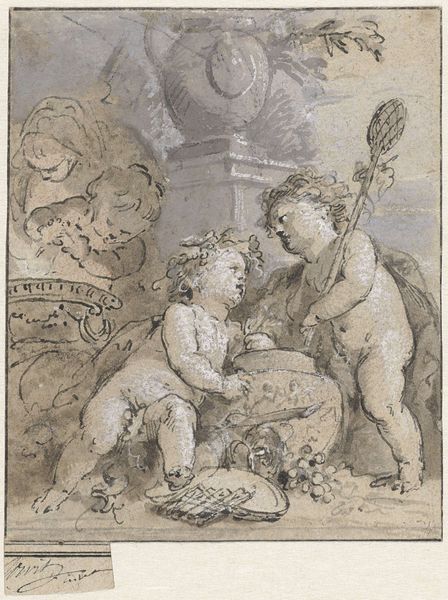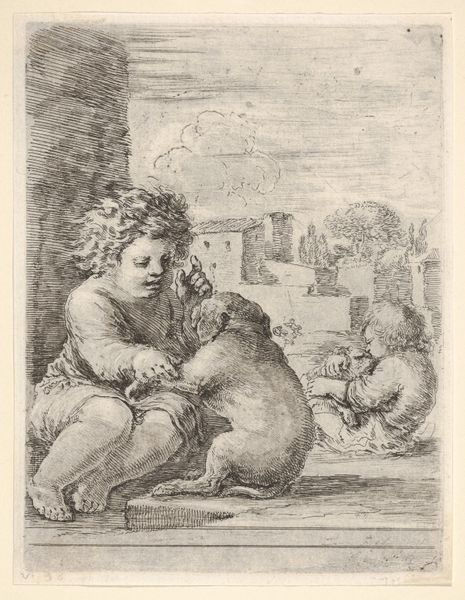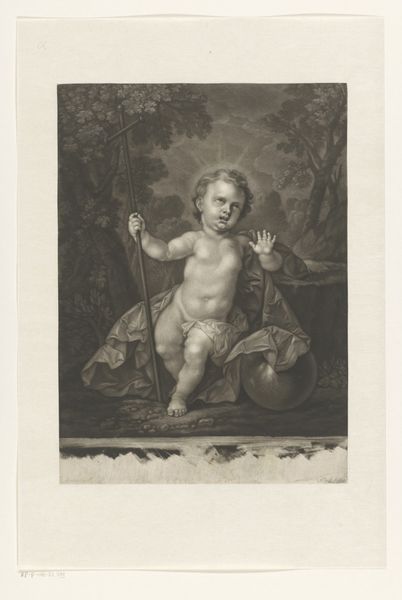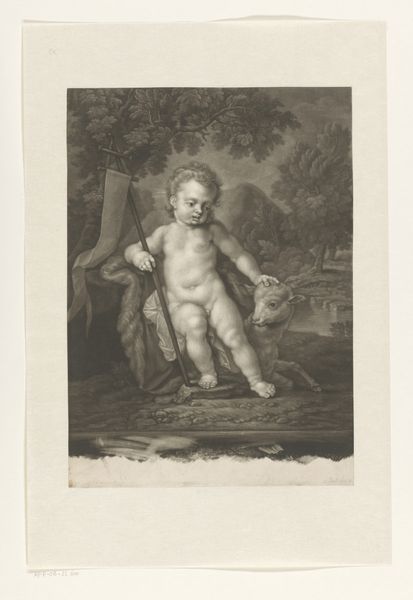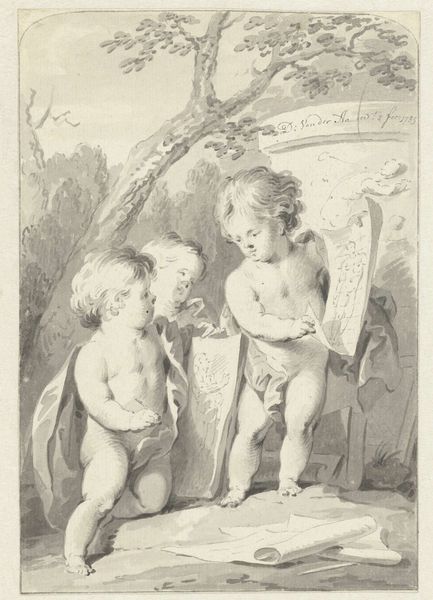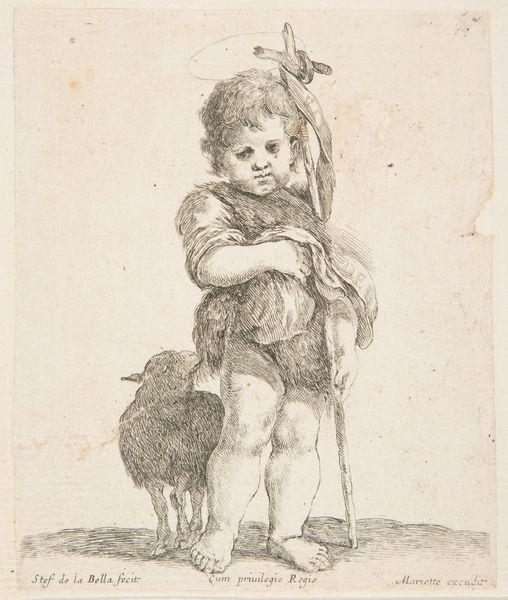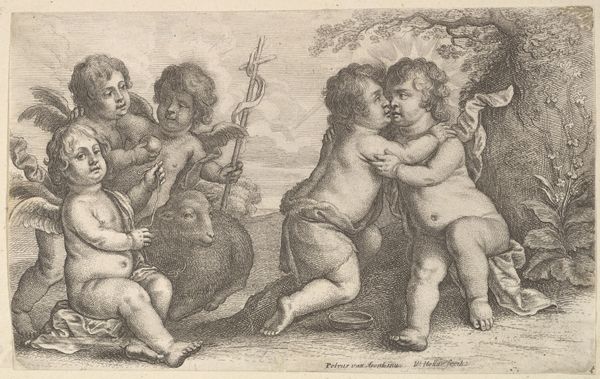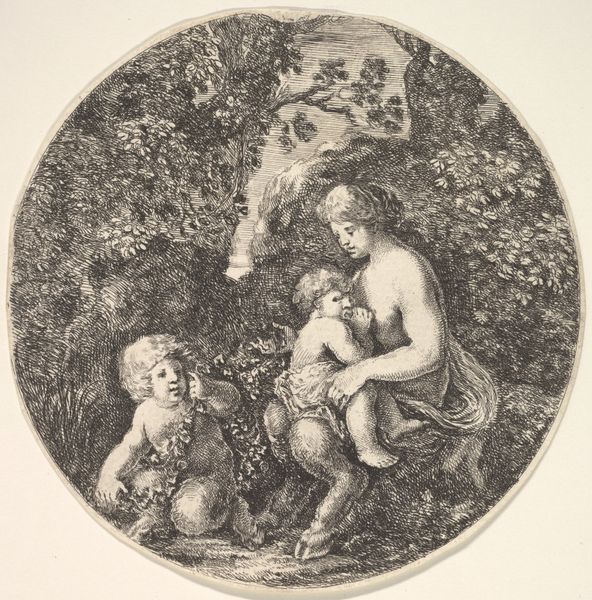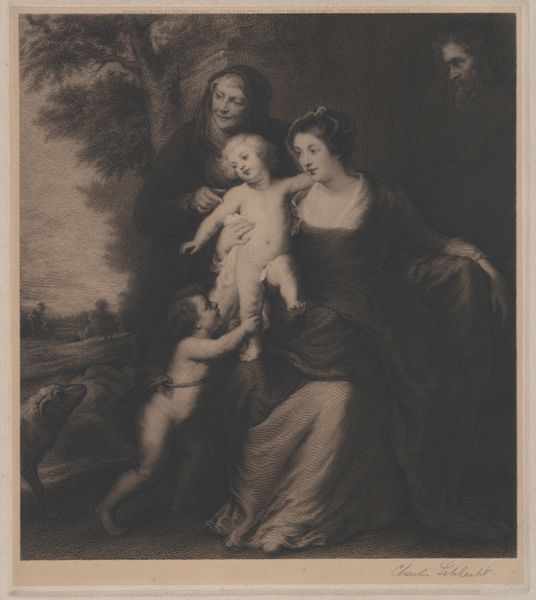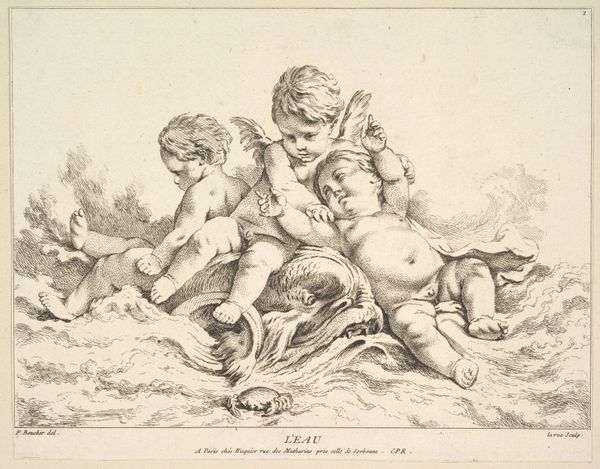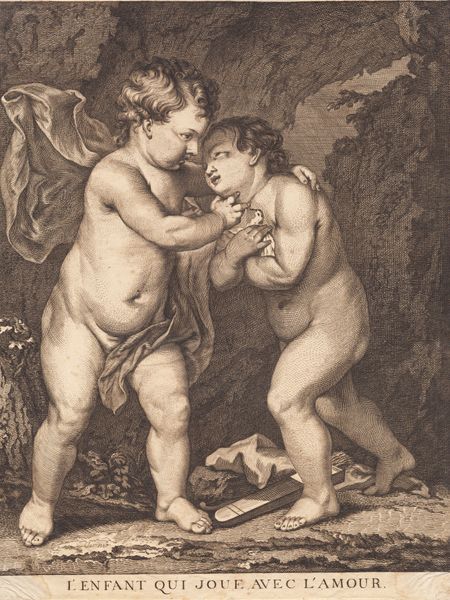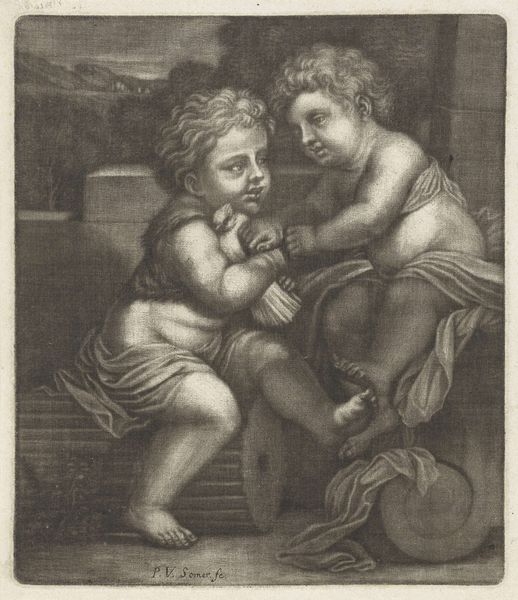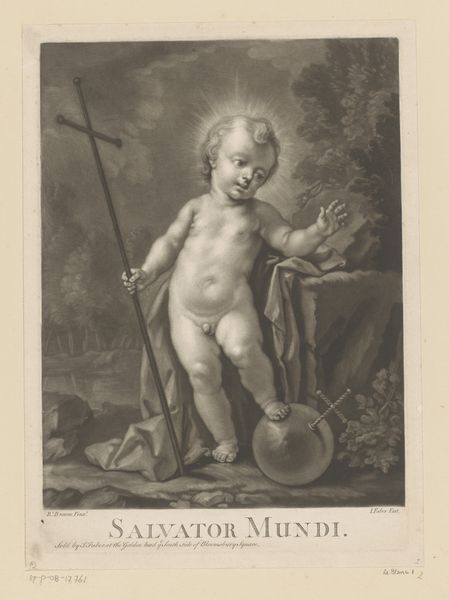
Portraits of two Boys in a Landscape, one dressed as a Hunter, the other St as John the Baptist 1647
0:00
0:00
painting, oil-paint
#
portrait
#
narrative-art
#
baroque
#
dutch-golden-age
#
painting
#
oil-paint
#
landscape
#
figuration
#
genre-painting
Dimensions: height 112.5 cm, width 133 cm, depth 6.5 cm
Copyright: Rijks Museum: Open Domain
Douwe Juwes de Dowe painted these two boys in a landscape; one as a hunter, the other as John the Baptist. Here, John the Baptist is represented in his infancy with attributes of a lamb and a staff. The lamb is a symbol of innocence and sacrifice, and John’s staff represents a symbolic connection to shepherding, a guide. Now, think back to ancient Greece, where the motif of the shepherd and the flock was an ideal of pastoral life, a state of innocence and harmony. Yet, these symbols transcend such simple readings. Over time, this icon has evolved. In Christian art, John's staff, at times, morphs into a cruciform scepter, signifying his role as a harbinger of Christ. The juxtaposition of the hunter and John the Baptist creates a complex image about our own mortality and spiritual destiny that engages with collective memory on a deep, subconscious level. These symbols resurface, evolving in different historical contexts.
Comments
No comments
Be the first to comment and join the conversation on the ultimate creative platform.
